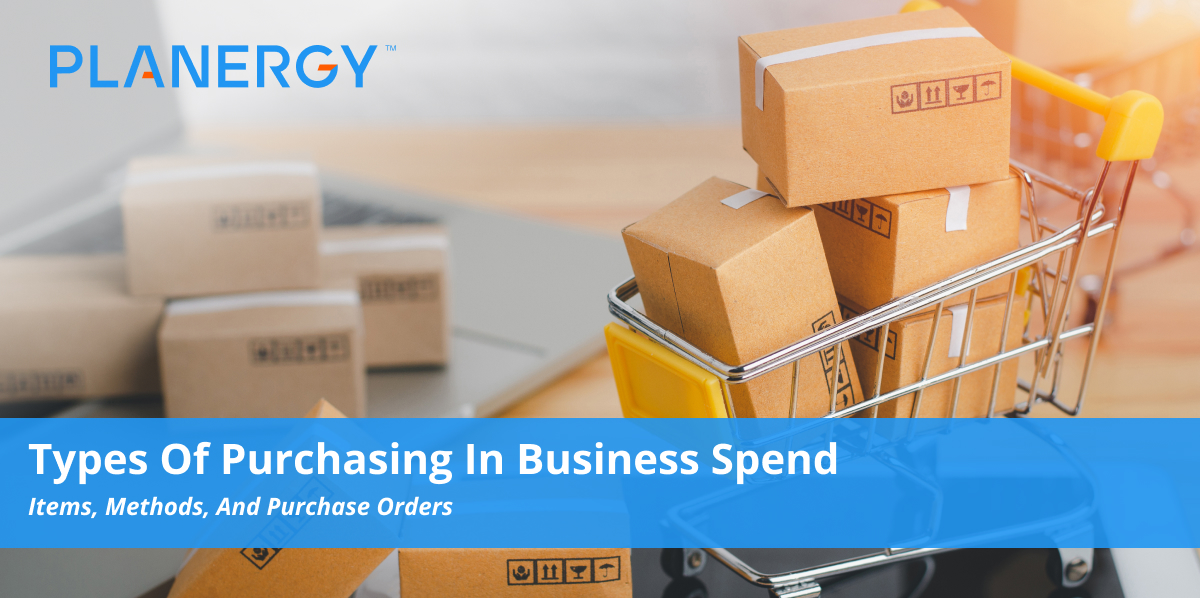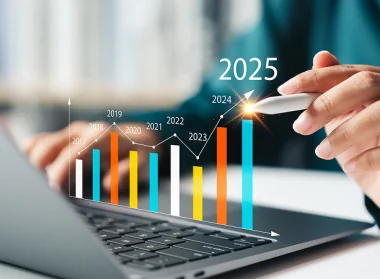In business, there are all kinds of things to buy, and ways to buy what you need.
Here, we’ll look at the types of things you’ll purchase, the methods you’ll use to purchase them, and the various types of purchase orders you’ll encounter throughout the process.
Types of Purchases
Depending on your business needs, your procurement process may involve buying:
- Raw Materials: These are things you’ll use to create a new product – like metals, lumber, or petroleum.
- Semi-Finished Products or Components: These are things you need to support your final product, such as components, systems, etc.
- Finished Products: These are things you’ll use for internal use or anything you won’t have to process before selling to the final customer. Things like: computers, carts, etc.
- Maintenance, Repair, and Operating Items (MRO): These are items that your business needs to operate, but doesn’t sell to the customer. Think cleaning supplies, office supplies, and spare parts for your machinery.
- Production Support Materials: This refers to items you’ll need to pack and ship items, such as tape, boxes, bags, labels, etc.
- Services: These are services you need to support your business, such as your web hosting, customer support, legal team, etc.
- Capital Equipment: Anything assets you’ll use for more than a year, such as machinery, computers, etc.
- Transportation: This is a specialized type of service to handle your inbound and outbound material flows, such as third-party logistics, freight, etc.
Methods of Purchasing
There are several ways to address purchasing, which include:
By Requirement
With this purchasing method, you only purchase the goods you need, when you need them, and in the required quantity.
These are generally things you don’t purchase regularly and can be considered emergency goods because you don’t keep them in storage.
Market Purchasing
Using this approach, you buy goods to take advantage of favorable market situations. It may not meet your immediate needs but will help in the future.
For instance, if a particular component you know you need plenty of is on sale, you may buy extra now, while it’s cheaper.
Speculative Purchasing
With this method, you purchase items at a lower price now, with the idea of being able to sell them at a higher price later. The idea is that you’ll have profit due to price increases later.
This shouldn’t be confused with market purchasing because market purchasing is done only when market conditions are favorable.
Speculative purchasing is done when profits are expected, there’s always the chance that prices will go down in the future and you’ll be stuck with higher storage costs or potentially obsolete products.
Purchasing for a Certain Future Period
This method purchases goods that you require regularly. These are things you don’t need a lot of, and the price isn’t expected to fluctuate much.
You’ll assess the needs for a certain future period, and make your purchases accordingly.
You can assess your requirements based on past experience, the period for which you need supplies, your inventory carrying cost, etc.
Contract Purchasing
With this method, you’ll have a contract with a supplier where you’ll purchase a certain quantity of materials and have them delivered in the future.
The delivery of the goods may take place in the future, but the price and other terms are fixed when the contract is signed.
This approach is helpful when prices are expected to go up in the future, and you can accurately estimate your future material requirements.
Scheduled Purchasing
With this approach, you provide suppliers with a probable time schedule for your material requirements, so they can arrange to meet your needs on time.
For this to work, you must have an accurate production schedule so that you can properly estimate your future material needs.
The schedule you provide to your supplier isn’t a contract.
Group Purchasing Small Items
You may find that you only need a small number of items to be purchased. Sometimes, the price is so low that the cost of placing the order may be more costly than the prices you pay for the items themselves.
In situations like this, you as the buyer place an order with the vendor for all the items. You add a percentage of profit to the dealer’s cost to get an agreeable purchase price.
As such, it only makes sense when you can inspect a vendor’s records to determine his cost. This approach reduces costs to you as the buyer because it eliminates a lot of clerical work.
Co-Operative Purchasing
In the industrial market, several businesses may pool requirements and join together to place bulk orders with vendors.
This is helpful to take advantage of quantity discounts, transportation costs, and cash discounts.
Once the materials are received, they’re divided out to each company in the co-op. It’s a great way for smaller companies to take advantage of the same pricing larger businesses can get.
Purchase orders fit with any kind of purchasing requirements your company may have, so it’s an important consideration as your business grows.
Types of Purchasing Orders Your Purchasing Department May Use
Let’s take a look at the different types of purchase orders you may come across during your procurement.
Standard Purchase Orders (PO)
This is the most common type of purchase order. Many companies require a purchase requisition process, where someone fills out a request for the products or services, and once approved, it converts to a PO to send to the vendor.
Once the vendor accepts the PO, it becomes a legal document.
You use these for sporadic orders, one-time purchases, and any time order details are critically important. On the PO, you can expect to find:
- The list of items to be purchased
- The quantity of each item
- The price of each item
- The delivery time frame for each item
- The delivery location for each item
- The terms and conditions of the order
Planned Purchase Orders (PPO)
With a planned PO, you have the same information as you’d have with the standard version, except there’s no delivery information.
The delivery date and location for each item are not included, though sometimes you may find tentative dates.
When the delivery information for some or all of the items is determined, a “release” against the PPO is created to confirm the delivery schedule details.
Blanket Purchase Orders (BPO)
These may also be referred to as “standing orders.” A BPO is similar to a PPO. Beyond omitting the delivery information, the quantity, and often the item price, are not included. The list of items in the PO is included.
When the quantity and delivery information is determined, a release is issued against the BPO before purchasing and delivery can occur under the arrangement.
When a business establishes a BPO with a supplier, there’s a maximum time for the validity of the BPO.
It will usually set a maximum item amount that can be ordered within that period. Discounts may be available when certain thresholds are milestones are met across multiple releases over the BPO’s lifespan.
BPOs are most often used when purchasing circumstances are unpredictable and forecasting is difficult.
Contract Purchase Orders (CPO)
With a CPO, you have a document similar to a PPO and a BPO. The major difference is here is that the list of items isn’t included.
Why?
A CPO is exclusively developed to serve as the legally binding terms for any subsequent POs.
When using a CPO, the only thing confirmed between the supplier and buyer is the terms and conditions for future POs. It’s basically a long-term high-level purchasing document that helps to foster ongoing business relationships.
It’s important to understand how and when to use each type of purchase order. It’s part of effective financial management for any organization and is critical to establishing policies as companies scale.
Why Create a Formal Purchase Process?
No matter what you’re purchasing or what kind of purchase order you use, developing formal purchasing policies helps to keep everyone on track. Ultimately, this helps your business keep track of spending and find ways to save more money.
With a purchasing system like PLANERGY, it’s much easier to implement your purchasing policies.
Users can submit purchase requests, which can then go through a series of automation for approval. The auditing features make it easy to see who took the last action on the purchase order, for better supply chain management.




